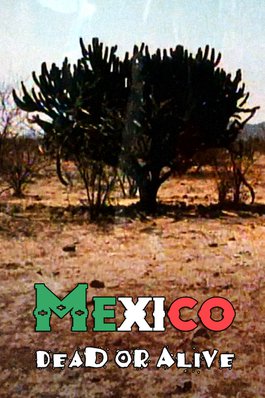
Mexico: Dead or Alive 1996
Distributed by First Run/Icarus Films, 32 Court St., 21st Floor, Brooklyn, NY 11201; 800-876-1710
Produced by Mary Ellen Davis
Director n/a
VHS, color, 56 min.
Adult
History, Political Science
Date Entered: 11/09/2018
Reviewed by Terrence McCormack, Law Library, State University of New York at BuffaloMary Ellen Davis portrays a very violent and unpleasant underside of Mexican society in this documentary about politics and the struggle for democracy. Mexico: Dead or Alive contrasts the industrialization of Mexico with the unmitigated poverty and discrimination that characterizes life for the disenfranchised members of the poor and working class. Through interviews with victims, government officials, activist and opposition party members the program explains the complexities of the Mexican movement towards democracy at all levels of society. It also serves as an oral history of how brutally and efficient these clandestine tactics are in dealing with criticism of authority or the status quo.
Davis introduces viewers to Dr. Mario Rojas who lives in Canada after fleeing Mexico out of fear for his life. Rojas, a member of the opposition PRD (Democratic Revolutionary Party) returns to Mexico for the production of this program. Lamenting that the program will present an unfavorable side of Mexico, he also reminds viewers that Mexico is a place of rich culture, history and diversity. In the program Rojas explains that the PRI (Institutional Revolutionary Party) has been a dominant force in Mexican politics and society for over sixty years. However, Rojas also states that over time the party has become disconnected from the people and the goals of the Mexican Revolution. While the PRI itself suffers from it's own violent conflagrations, Rojas and his associates contend that the PRI unofficially uses local police to suppress opposition through assassination, torture and threats. In interviews, PRI officials denied any connections with harassment efforts and maintain that the deaths and beatings of PRD and other opposition members happen for reasons other than political.
The producer makes a special effort to show the impact of persecution by presenting and discussing the effects of loss and fear suffered by individual victims and their family members. David also points to the January 1, 1994 Zapatista uprising in southern state of Chiapas as a regional backlash to the PRI policy. The action of the National Liberation Army or Zapatistas movement in Chiapas (named after Emiliano Zapata, the agrarian revolutionary of the 1911 Mexican Revolution) concerned the rights of indigenous and agrarian people. However, and according to an interviewed Mexican political scientist, events like the 1994 uprising are symptomatic of Mexico's historical struggle that involves industrialization, land, and power.
The program appears to be slanted toward the opposition's side of the argument, and Mario Rojas does perform interviews in collaboration with the producer. However, Davis is very careful to provide balance by interjecting government and PRI points of view into the program. Overall the producer makes a reasonable attempt to present a plausible and fair assessment of events. Technically the program is above average and the English subtitles are very easy to read. This program is recommended for any course work covering Mexican culture, history, or current events.